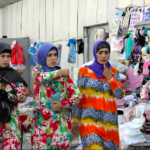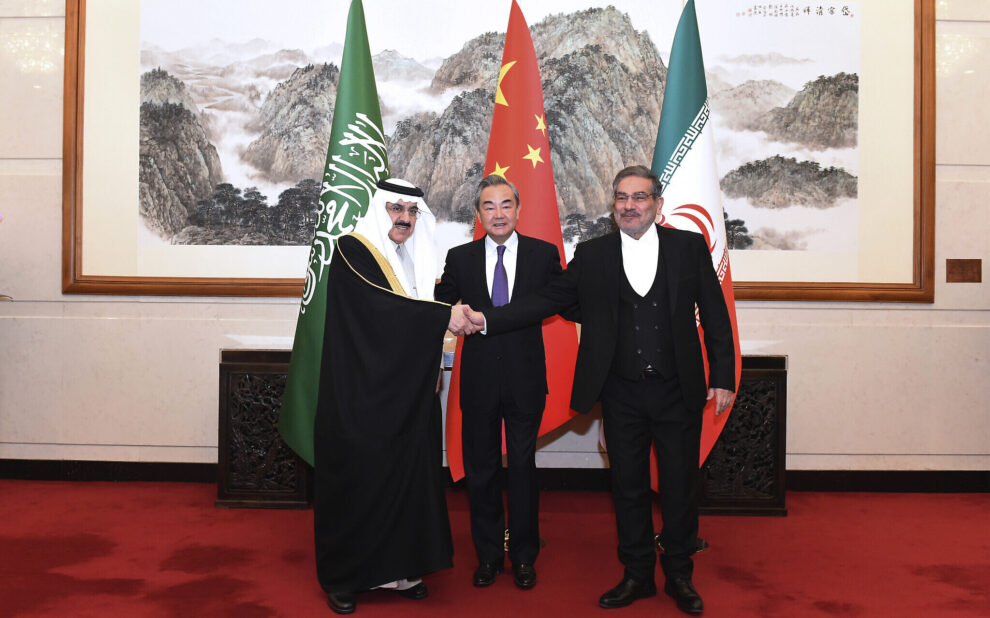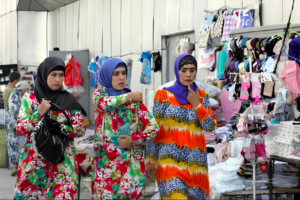In a rare move on Saturday, the US Navy announced it was dispatching a nuclear-powered guided-missile submarine to the Persian Gulf, passing Egypt’s Suez Canal on its way to an American base in Bahrain.
An announcement like this, including the exact path and precise location of the vessel, was a calculated move: The United States has for the past week been conducting an ongoing situational assessment regarding Iran and its network of Shiite militias throughout the region.
The immediate goal of sending a submarine packing a payload of 154 Tomahawk cruise missiles is to strengthen the US naval presence in the Gulf by adding significant firepower on Iran’s doorstep — a clear signal to Tehran that the US is willing to act to protect its interests in the region.
It didn’t take Iran long to respond, with an announcement that the Revolutionary Guards’ naval fleet would conduct a large maritime exercise in the Gulf and Red Sea — a declaration that Tehran views itself as free to operate in those areas, too.
Washington’s move also has a strategic dimension. The US is highly concerned about the emerging axis in the region between Iran, Russia, China, and Saudi Arabia. The meeting of the foreign ministers of Iran and Saudi Arabia in Beijing on Thursday, and the declarations about renewing diplomatic relations and opening mutual embassies, were seen as a victory for Beijing.
China capitalized on Iranian animosity towards the US and the continuing disappointment and anger on the part of Riyadh towards Washington and US President Joe Biden, and weaved a significant achievement out of this bundle of tensions.
Tehran’s increasing self-assuredness is being felt in the entire region, and these developments, needless to say, have profound ramifications for Israel, which has witnessed a marked uptick in activity on its northern borders — including the largest barrage of rockets from Lebanon since 2006 on Thursday, and rocket fire from Syria too.
It’s no coincidence, even as Hezbollah sought to distance itself and Israel formally declared that it held Hamas forces in southern Lebanon responsible for the rocket fire, that the Iran International news outlet on Saturday quoted anonymous sources who said that Iran and Hezbollah were aware of Thursday’s fire ahead of time.
Firefighters work to extinguish a fire after a rocket fired from Lebanon hit the Israeli town of Shlomi, April 6, 2023.(Fadi Amun/Flash90)
This was a kind of early warning, published on a website monitored by the Iranian regime and senior leadership in Tehran on a minute-by-minute basis: Someone wanted to make sure that Tehran understood clearly that Israel knows exactly who was behind the rocket fire.
The report also shed light on the message behind the Israeli military response to the rocket fire. “Israel’s attacks in Lebanon and the Gaza Strip were not a reaction to the attacks from Lebanon and Gaza, but rather a message to the Islamic Republic,” the report said.
Against the background of the escalating hostilities and threats between Israel and Iran, another significant event was taking place Sunday in Sana’a, the capital of Yemen: peace talks between Saudi Arabia and Yemen to end the war between them. These talks could not have taken place without the approval of Tehran, which backs the Houthi minority in Yemen.
From Jerusalem’s perspective, an end to the conflict in Yemen may come with consequences, if the attention and activity of the Houthis is redirected toward the Jewish state. In the eyes of Iran’s Islamic Revolutionary Guard Corps, the Houthi rebels are an Iranian militia just like Hezbollah in Lebanon. Ending the war in Yemen would increase Tehran’s firepower, and so the chances of the peace overtures succeeding are high.
A unified front against the US
Iran has made a fundamental decision to lower tensions with Sunni Arab countries in order to focus on a strategy of building an anti-US axis. China’s support of Iran for renewed relations with Saudi Arabia is just a link in that chain.
This policy is directly connected to Iran’s deepening ties with Russia and its warming of relations with Turkmenistan, Kazakhstan, and Armenia. In the eyes of the Iranian regime, this constitutes a unified front against the “great satan,” America. And it will embolden Iranian resolve to directly attack American targets, and its readiness to confront Israel in Lebanon and Syria.
In a marked shift from the past, from the viewpoint of the Iranians, any positive relationship with a Sunni Muslim country serves their strategic interest, especially in light of the Abraham Accords that constricted Tehran’s efforts to widen its sphere of influence.
An Iranian woman holds up a poster showing Sheikh Nimr al-Nimr, a prominent opposition Saudi Shiite cleric who was executed by Saudi Arabia, in Tehran, Iran, during a protest on January 4, 2016. (AP Photo/Vahid Salemi)
How far is Iran willing to go? The following story may offer an indication:
Seven years ago, Saudi Arabia executed one of the leaders of the Shiite minority in the country, Sheikh Nimr al-Nimr, a prominent figure in the struggle of the Shiites there for rights and recognition who often spoke out against the authorities. Iran openly supported him.
His execution, on the orders of the Saudi monarchy, was the trigger that led to the storming of the Saudi embassy in Tehran, which has been shuttered ever since. The street where the embassy was located was renamed days later as Sheikh Nimr Street.
On Saturday, even before the first Saudi diplomat arrived to reopen the Saudi embassy in Tehran, a journalist who happened by was surprised to see that the Sheikh Nimr street sign had been removed.
Source: Time of Israel











